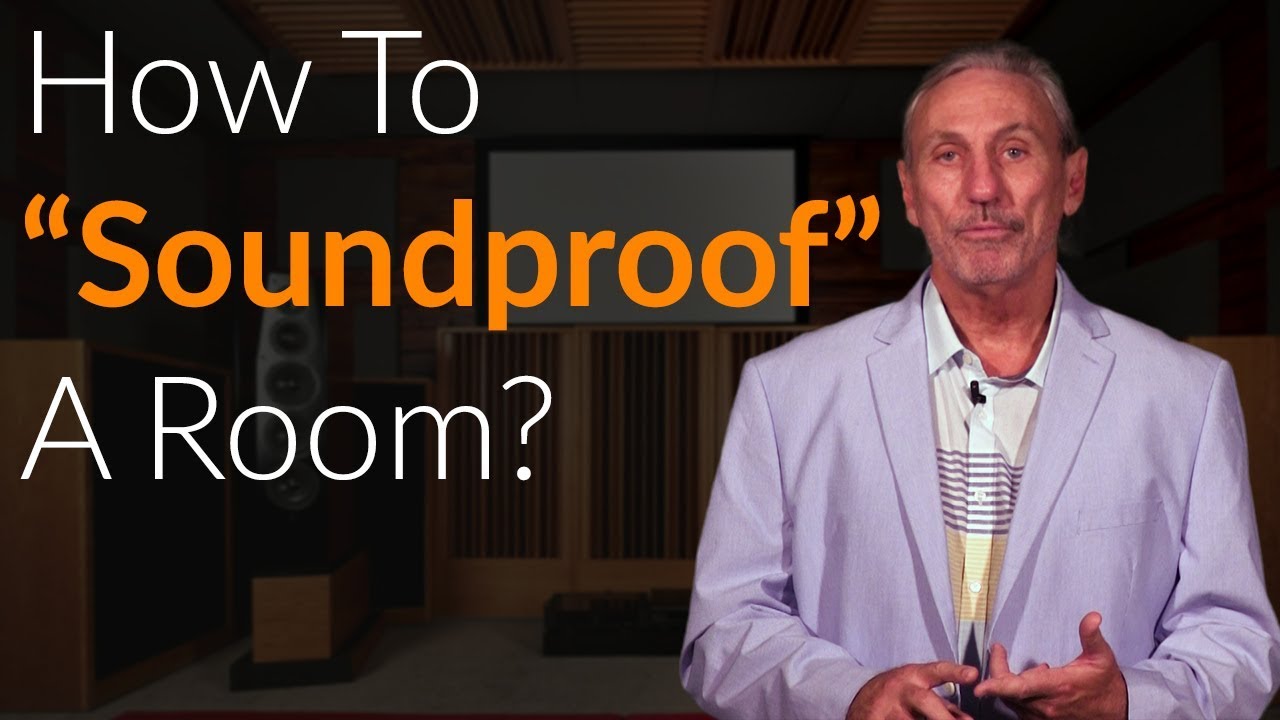Today we’re going to talk about soundproofing a room. First off, there’s really no such thing as soundproofing a room because you don’t proof sound. You don’t isolate it completely. You can’t make things 100% quiet. So what you do is you manage sound. You lower levels, you lower pressure levels so that they’re workable and manageable for your usage.
We’re filming today in a video studio. We have trucks driving by and things like that. And believe me; we’re not shooting when the trucks go by because we don’t want it to bleed into the audio. So we’re managing the situation. Well, that’s what you do when you’re soundproofing a room. And the first thing that you must do when you’re soundproofing a room – now, it’s going to make a liar out of me – the first thing that you do when you’re soundproofing a room is have numbers. Guessing is gambling when it comes to noise. You just can’t guess. You’ll guess wrong. I’ve been doing this for 40 years and even I estimate wrong sometimes.
So we have to quantify and qualify the noise. We take measurements. We have a process where we use some apps on the app store. Pressure meters, real time analyzers and then we have our 7-day chart which records all the information that you’re going to take with these two apps. Then you send that to us and we design the structure that will isolate that noise that you’ve measured.
No guessing. We’re using real data and that’s how you really soundproof a room. And the structure you build is directly based on the data of the noise, the frequency and amplitude of the noise that you’ve recorded over 7 days. Why 7 days? Because we have to get an average. Some days are going to be noisier than others. And you don’t want a room where you can only work in it on quiet days so to speak. You want a room that you can go to anytime the creative urge or process strikes.
So soundproofing a room is all about data. Measure, measure, measure. And then we build the structure, we build the barrier, the structure between the noise and yourself that corresponds to the data. And no guessing because guessing is gambling.
—
This is an unedited transcript from our video series from Acoustic Fields. There will be some errors in grammar and sentence structure that occur during this translation process.
For complete understanding and comprehension, please view the video which is included in this text. For any additional information regarding this topic or others relating to room acoustics, please contact us directly at:
P: 520 – 392 – 9486








Hello
Thanks for sharing this information “How to soundproof a Room”
SoundProofing, noise reduction, Where you can Reduce Noise level within the Space
We have acoustic panels by using these acoustic Panels you can reduce the noise levels from any space.
V, Panels that you hang within a room are for sound absorption or diffusion. Noise or barrier technology is a permanent fix that requires the construction of walls that are frequency and amplitude sensitive to the noise issues you are facing. There is no panel type that you can hang in a room that will stop noise from leaving or entering the room.